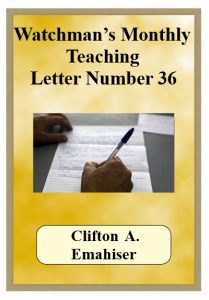THIS IS MY THIRTY-SIXTH MONTHLY TEACHING LETTER AND COMPLETES MY THIRD YEAR OF PUBLICATION. In the last few lessons we have been investigating the history of Egypt in comparison to Biblical history. In lesson #31, we took a look at a good example of what Egyptian history is not; a premise that Egyptian history is 1000 years younger than secular established history. No doubt, secular history may be off somewhat, but a thousand years is somewhat extravagant. Also, in lesson #31, it was established with archaeological evidence that Israel’s sojourn in Egypt must have been contemporary with the 18th Egyptian dynasty.
In that lesson, we also considered the bizarre circumstances surrounding the Akhenaten period. Then, too, in lesson #31, we considered the meaning and origin of the name of Moses. In lesson #32, we examined the implications in connection with Akhenaten’s followers returning to Thebes. Again, in lesson #32, we considered more documentation concerning Moses’ name. Then, we also explored the story of Hatshepsut, a lady pharaoh who dressed as a man. We also discussed Joseph’s era as being possibly simultaneous with that of the Hyksos.
